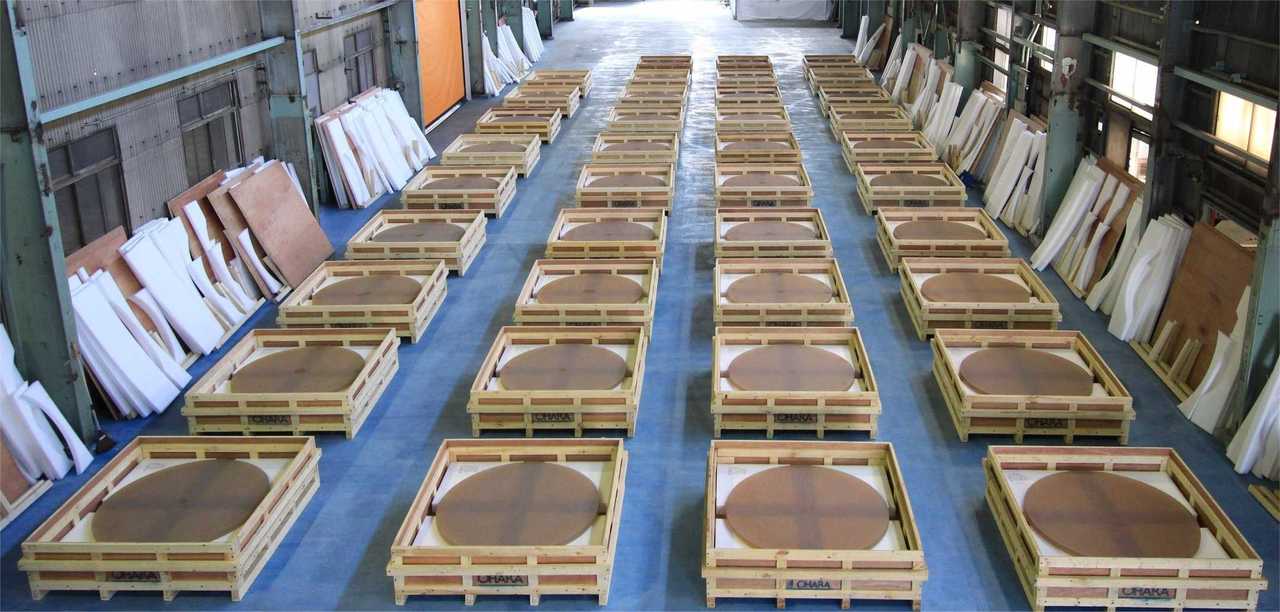
Segmented Mirror Blanks in Production in Japan

Production on glass segments that will make up Thirty Meter Telescope’s (TMT) primary mirror is underway in Japan, as significant progress continues being made on the telescope’s manufacturing work by many of the participating nations.
Over 100 of the 574 segmented mirror blanks needed for TMT’s 30-meter-wide primary mirror have already been produced in Japan, with fifty of those transported to a Canon factory in Utsunomiya (about 70 miles outside Tokyo) for surface polishing. Canon Inc. and the National Astronomical Observatory of Japan have established a polishing process for the individual mirrors. Coordinated research and development is underway with China, India and the United States to conduct additional polishing work.
The mirror production process begins with unpolished glass segments produced at a factory near Tokyo. TMT has chosen a special glass ceramic material called CLEARCERAM®-Z, developed and produced by OHARA Inc. in Japan, to meet the telescope’s stringent specifications. These mirrors are made of high quality material with zero thermal expansion properties to prevent it from deforming.
“Japan is proud to be part of this ongoing effort in building TMT,” said Masanori Iye, vice-chair of the TMT International Observatory Governing Board, and Professor Emeritus of National Astronomical Observatory of Japan. “This is an example of how people working cooperatively and sharing ideas can create positive results.”
TMT’s primary mirror will consist of 492 hexagonal segmented mirrors, with an additional 82 spare segments.
The current Keck telescopes on Maunakea use a similar mirror design, but each telescope only requires 36 similar mirror segments in comparison. When in operation, the primary mirror of the Thirty Meter Telescope is expected to have 156 times the light-gathering power and 13 times the resolving power of the Hubble Space Telescope.
TMT is expected to deliver sharper and deeper images than existing telescopes both on the ground and in space. This will allow scientists to find possible habitable planets around other stars and determine how earlier galaxies were formed.
Hundreds of astronomers, engineers and technicians from around the world continue to design and manufacture telescope parts that when assembled will eventually become the Thirty Meter Telescope on Maunakea.
“Japan’s mirror segment production is one of many important production assignments taking place,” said Henry Yang, Chair of the TMT International Observatory Board. “With work currently underway in five different regions, the TMT project is truly and literally a global effort.”
About TMT
The Thirty Meter Telescope Project has been developed as collaboration among Caltech, UC, the Association of Canadian Universities for Research in Astronomy (ACURA), and the national institutes of Japan, China, and India with the goal to design, develop, construct, and operate a thirty-meter class telescope and observatory on Mauna Kea in cooperation with the University of Hawaii (TMT Project). The TMT International Observatory LLC (TIO), a non-profit organization, was established in May 2014 to carry out the construction and operation phases of the TMT Project. The Members of TIO are Caltech, UC, the National Institutes of Natural Sciences of Japan, the National Astronomical Observatories of the Chinese Academy of Sciences, the Department of Science and Technology of India, and the National Research Council (Canada); the Association of Universities for Research in Astronomy (AURA) is a TIO Associate. Major funding has been provided by the Gordon & Betty Moore Foundation.
For more information about the TMT project, visit tmt.org, www.facebook.com/TMTHawaii or follow @TMTHawaii.
TMT Responds to President Obama’s Announcement of the Kamaaina Observatory Experience at White House Astronomy Night
Statewide Poll Results Show Strong Support for TMT